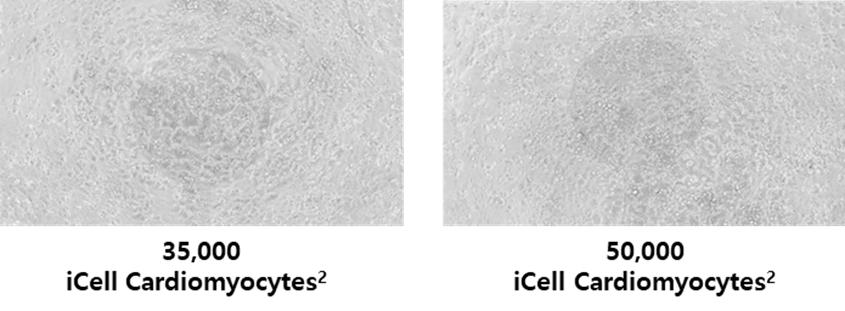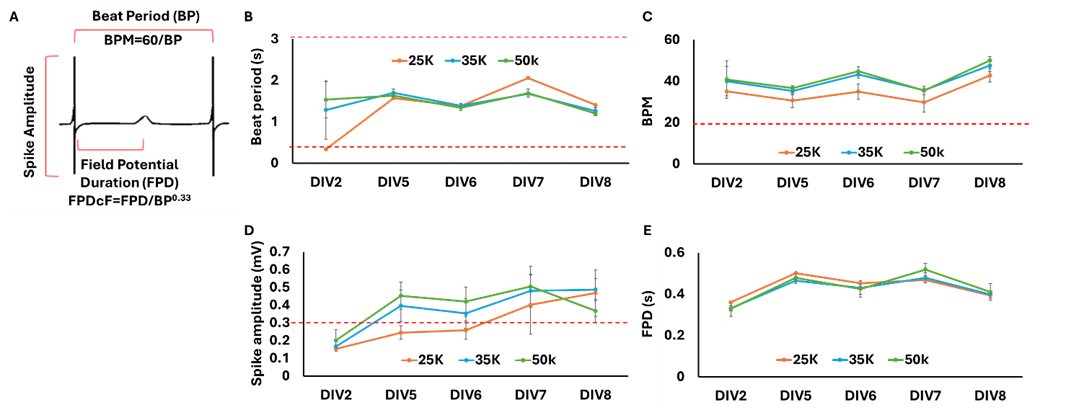Cellames Cell Analysis Team
Abstract
The purpose of this experiment is to optimize the seeding density of iCell Cardiomyocytes2 cells using the CFPS-32 system.
Keyword
CFPS-32, iCell, Cardiomyocytes, Field Fotential, LFP
Main Text
Experiment Overview
iCell Cardiomyocytes2 | Seeding quantity | 25,000 ~ 50,000 cells | |
System | CFPS-32 | Cell chip | CITO-16W01E-SGL |
Coating | Fibronectin 50μg/mL |
Workflow
DIV0 | DIV1-DIV8 |
-Coat CFPS-plate with Fibronectin and plate iCell Cardiomyocytes2 | -Replace half of maintenance media every 48 hours until DIV8 -Field potential recording using the CFPS-32 System |
Results
iCell Cardiomyocytes2 on CITO-16W01E-SGL Cell Chip

The image shows the results of 35K and 50K cells seeded on the fibronectin-coated recording electrodes of the CITO-16W01E-SGL cell chip on DIV6. During incubation, the morphology and beating of iCell Cardiomyocytes2 were clearly observed through the transparent electrodes.
Field Potential Measurement of iCell Cardiomyocytes2

Analysis of Field Potential Parameters in iCell Cardiomyocytes2 Using the CFPS-32 System
(A) Key parameters, including spike amplitude, beat period (BP), and field potential duration (FPD), were analyzed based on the acceptance criteria proposed by Blinova et al. and the HESI CiPA (Comprehensive in vitro Proarrhythmia Assay) protocol: spike amplitude (≥ 0.3 mV), beat period (0.67–3 seconds), and BPM (20–90 beats/min, or 0.3–1.5 Hz).
(B) Beat period stabilized from DIV5, consistently meeting the acceptance criteria.
(C) BPM consistently met the criteria from DIV5 onward.
(D) Spike amplitude consistently fulfilled the criteria at 35K and 50K densities across all time points. At 25K density, the spike amplitude satisfied the criteria starting from DIV7.
(E) FPD stabilized from DIV5 to DIV8 across all densities, meeting the acceptance criteria outlined in the protocol.
Summary
From DIV5 to DIV8, 35K and 50K seeding densities demonstrated stable BP, BPM, spike amplitude, and FPD, consistently meeting the acceptance criteria. At 25K seeding density, the criteria were met from DIV7 to DIV8, allowing for stable evaluations. Therefore, seeding densities of 35K or higher are recommended, and for 25K, toxicity evaluations can be conducted from DIV7 onward.
Bibliographic Information
Research Ethics Related Information
Licenses
Attribution (CC BY)
